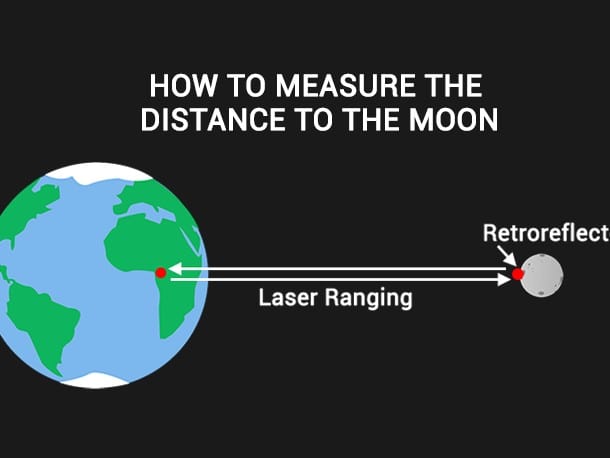Discovering the exact distance between the Earth and the Moon has been a fascinating journey for scientists. The process of measuring this distance involved various innovative methods and technologies.
One method used was the parallax technique. By observing the Moon from two different points on Earth, scientists could determine the angle subtended by the Moon. By using trigonometry, this angle could then be used to calculate the distance to the Moon.
Another method employed was the radar reflection technique. By emitting radio waves towards the Moon and measuring the time it took for the waves to bounce back, scientists could calculate the distance based on the speed of light.
With advancements in technology, laser ranging has become the most accurate method to measure the distance from Earth to the Moon. By firing a laser at retro-reflectors placed on the Moon’s surface by previous missions, scientists can precisely measure the time it takes for the laser beam to return. This data can then be used to calculate the distance between the two celestial bodies.
Overall, measuring the distance from Earth to the Moon has been a testament to human ingenuity and the constant quest for knowledge about our universe.
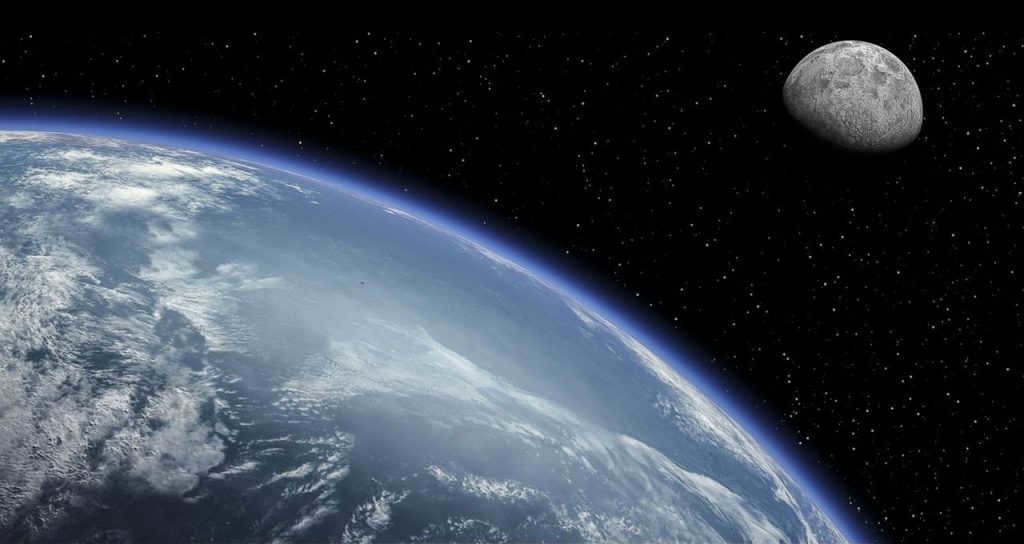
For as long as anyone can remember, the moon has served as a steadfast satellite to our planet, residing closest to it amongst all celestial bodies. It comes as no surprise that humanity has harbored an eternal desire to explore it firsthand. However, the question remains: just how far must one travel to reach this enigmatic entity?
What is
The distance between Earth and the Moon is typically determined by measuring the distance between the Moon’s center and the Earth’s center. It is not possible to measure this distance using conventional methods employed in everyday life. As a result, the distance to our planet’s satellite is calculated using trigonometric equations.
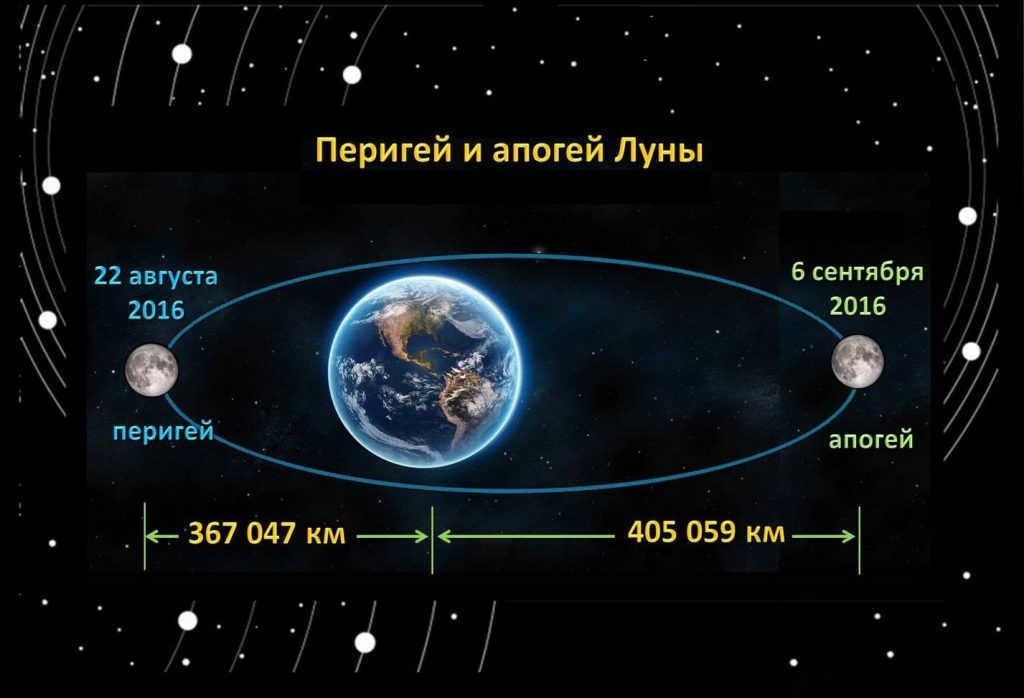
Just like the Sun, the Moon undergoes continuous movement in the sky of the Earth near the ecliptic. However, the movement of the Moon is distinct from that of the Sun. As a result, the orbital planes of the Sun and the Moon have a 5-degree difference. It may seem that due to this difference, the trajectory of the Moon in the Earth’s sky would be similar to the ecliptic, with only a 5-degree shift:
The motion of the Moon is similar to that of the Sun, moving from west to east, opposite to the daily rotation of the Earth. However, the Moon moves across the Earth’s sky at a much faster pace than the Sun. This is because the Earth completes a revolution around the Sun in approximately 365 days (Earth year), while the Moon completes a revolution around the Earth in just 29 days (lunar month). This difference in speed led to the division of the ecliptic into 12 zodiacal constellations (with the Sun shifting 30 degrees along the ecliptic in one month). Throughout a lunar month, the Moon goes through a complete cycle of phases:
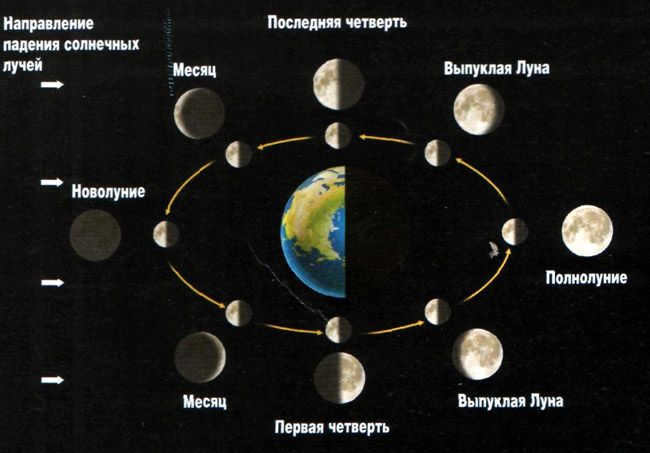
In addition to the Moon’s trajectory, we also consider the factor of its elongated orbit. Unlike the Earth, which has an eccentricity of 0.017, the Moon’s orbit has an eccentricity of 0.05. This difference in orbit shape causes the apparent diameter of the Moon to constantly vary between 29 and 32 angular minutes.


Ultimately, the Moon’s path in the Earth’s sky is constantly changing in relation to the stars in the background and the ecliptic.
Throughout the day, the Moon moves in relation to the stars by 13 degrees, and in an hour, it moves by approximately 0.5 degrees. Contemporary astronomers often utilize the Moon’s movement to determine the angular sizes of stars near the ecliptic.
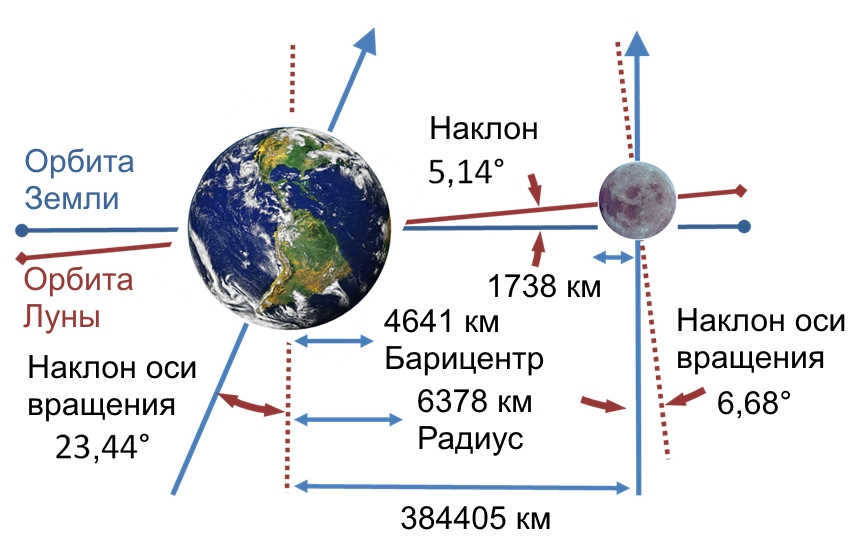
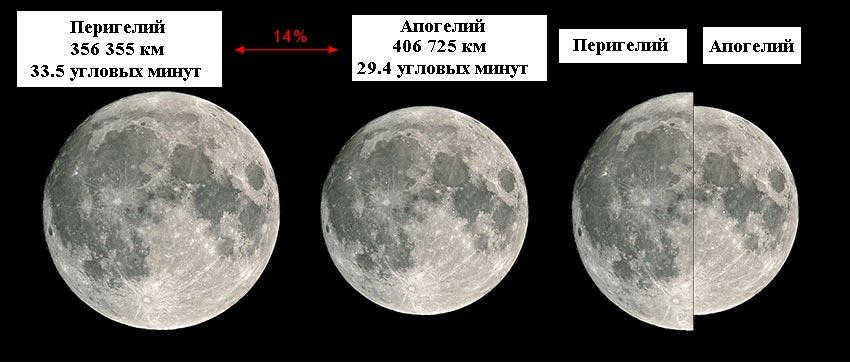
A comparison is made between the apparent size of the Moon in the Earth’s sky when it is at its closest point (pericenter) and when it is at its farthest point (apocenter) in its orbit.
Furthermore, changes in the angle of the Moon’s orbit in relation to the plane of the Earth’s orbit around the Sun (known as the ecliptic) are also noticed, with a shift of approximately 18 minutes of arc occurring every 19 years.
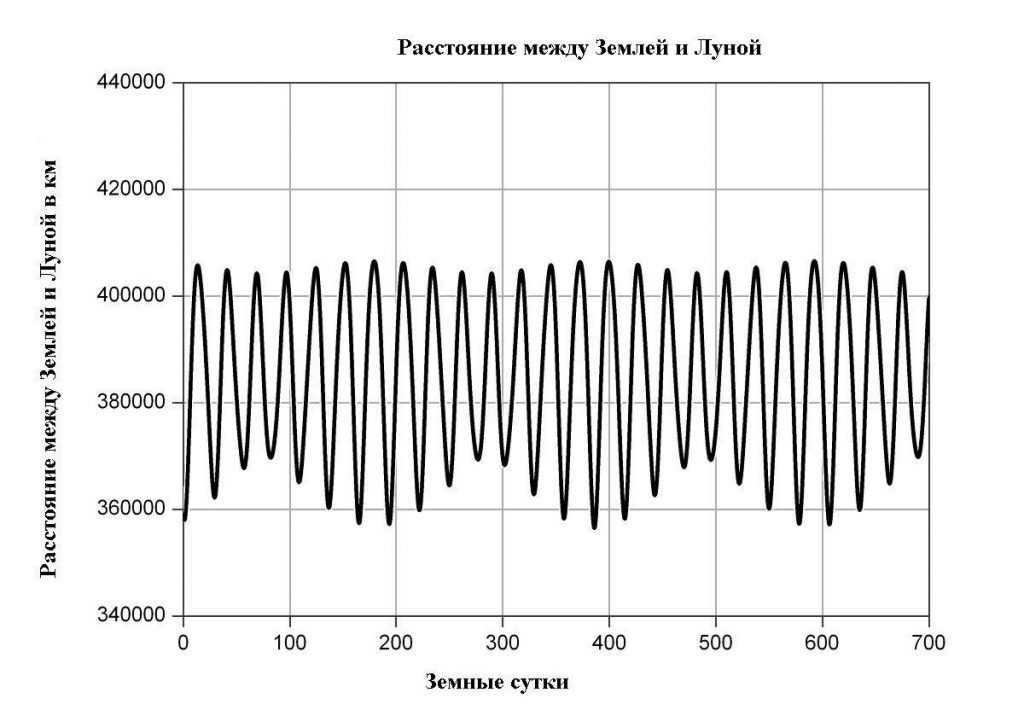

This graph illustrates the variation in the distance between the Earth and the Moon over a span of 2 years.
What is the equivalent of
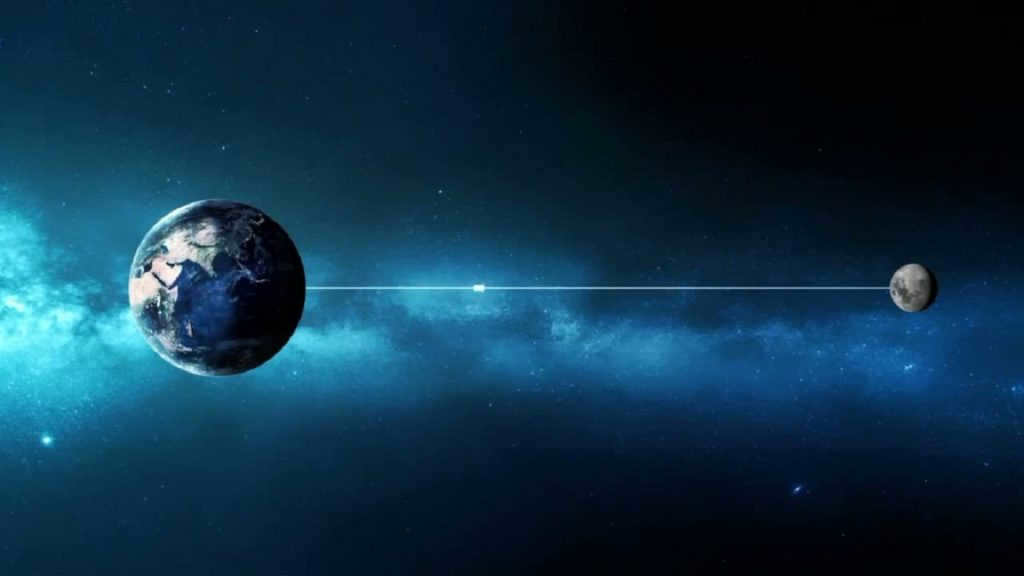

The journey of light from Earth to the moon is incredibly fast, taking only 1.255 seconds to reach our satellite.
When spacecraft travel to the Earth’s satellite, they face the challenge of navigating a curved path. This is because the Moon orbits away from the intended destination, necessitating course corrections. In theory, a spacecraft traveling at a second space velocity of 11 km/s (40,000 km/h) could reach the Moon in approximately 10 hours. However, in reality, the journey will take longer. This is due to the fact that the spacecraft gradually accelerates in Earth’s atmosphere at the start, reaching a speed of 11 km/s to escape the planet’s gravitational field. As the spacecraft approaches the Moon, it will then need to decelerate. It’s worth noting that this velocity represents the maximum speed achieved by modern spacecraft.
Light from our planet to the Moon arrives remarkably fast – in just 1.255 seconds. However, the idea of traveling at the speed of light remains purely a figment of imagination.
Let’s try to comprehend the journey to our satellite in terms of more familiar units. If we were to walk at a pace of 5 km/h, it would require approximately nine years to reach the Moon. Alternatively, driving a car at 100 km/h would shorten the journey to a mere 160 days. As for airplanes, if they were capable of flying to the Moon, the voyage would extend for approximately 20 days.
Just like the astronomers in ancient Greece, calculations were made to determine the distance to the Moon
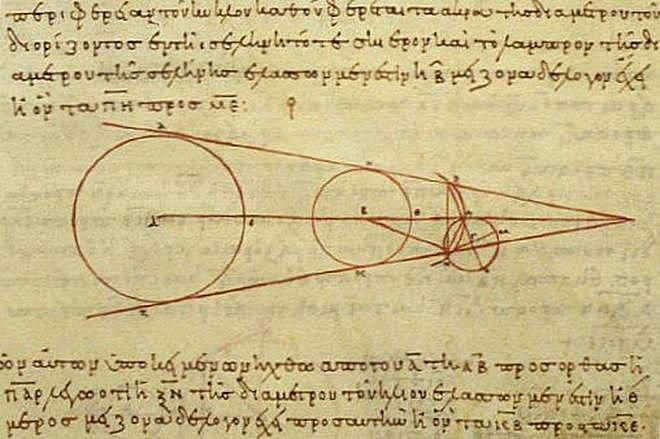
The measurement of the distance between the Earth and the Moon has a long history. It was the Moon that became the first object in space for which scientists were able to determine its distance from Earth. The credit for this breakthrough is often given to ancient Greek astronomers, who are believed to have made the initial calculations.
For ages, scientists have been attempting to determine the distance to the Moon. The first person to tackle this task was Aristarchus of Samosia. He made an estimation of the angle between the Moon and the Sun, which turned out to be 87 degrees. This led to the discovery that the Moon is approximately 20 times closer to the Sun (since the cosine of the angle equal to 87 degrees is 1/20). However, due to an error in measuring the angle, the ratio was off by a factor of 20. Nowadays, we know that the actual ratio is 1 in 400 (with the angle being approximately 89.8 degrees). The significant error was caused by the difficulty of accurately estimating the angular distance between the Sun and the Moon using the limited astronomical instruments available in ancient times.
By that time, regular solar eclipses had already allowed ancient Greek astronomers to deduce that the Moon and the Sun had similar angular diameters. Based on this observation, Aristarchus concluded that the Moon is 20 times smaller than the Sun (although it is actually about 400 times smaller).
In the 2nd century BC, Hipparchus of Nicaea, a mathematician and astronomer, made a significant calculation regarding the distance between the Earth and its satellite. He determined that this distance was 60 times larger than the radius of our planet. Hipparchus arrived at this conclusion by studying the motion of the moon and its regular eclipses.
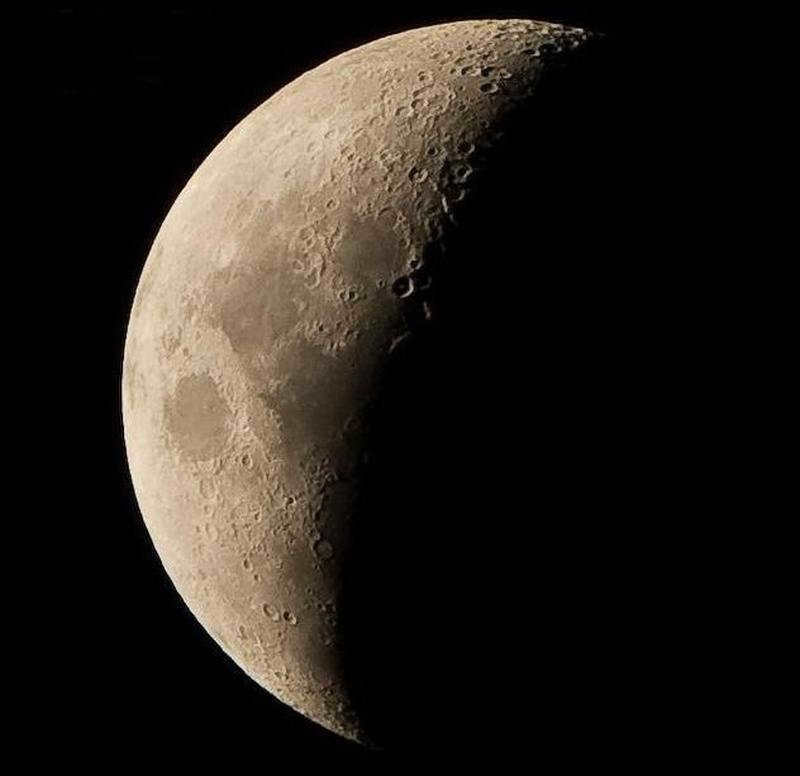
Given that during the eclipse the Sun and the Moon have the same angular size, we can determine the ratio of their distances using triangle similarity. This ratio is 400. By applying these rules again, but this time considering the diameters of the Moon and the Earth, Hipparchus calculated that the diameter of the Earth is 2.5 times greater than the diameter of the Moon. In other words, Rл = Rз/2.5.
It was common knowledge during Hipparchus’s time that at an angle of 1′, an object can be observed whose dimensions are 3,483 times smaller than the distance to it. Therefore, with the observed radius of the Moon at 15′, it will be 15 times closer to the observer. Hence, the ratio of the distance to the Moon to its radius will be equal to 3483/15, which is 232. Therefore, Sл = 232Rл.
Thus, the distance to the Moon equals 232* Rз /2.5, which is equivalent to 60 Earth radii. This calculation results in a distance of 6 371*60=382 260 km. What’s fascinating is that modern instruments have confirmed the accuracy of these ancient scientist’s measurements.
Presently, laser devices are utilized for measuring the distance to the Moon with remarkable precision, up to a few centimeters. These measurements are completed within a very short timeframe, approximately 2 seconds, during which the Moon moves around 50 meters away from the location where the laser pulse is emitted.
Advancement in methods for determining the distance to the Moon
It was not until the telescope was invented that astronomers could acquire reasonably precise measurements of the Moon’s orbital characteristics and its proportion to the Earth’s dimensions.
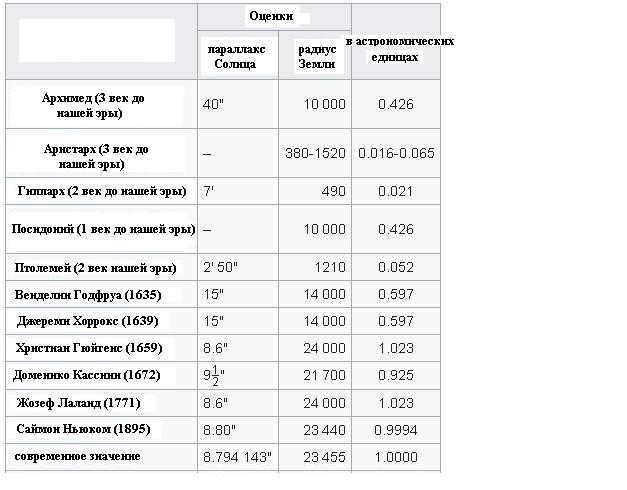
Here is an illustration showcasing the progression of an astronomical unit throughout history.
An improved technique for determining the distance to the Moon was established with the advent of radar technology. In 1946, the United States and Great Britain conducted the first radar-based measurement of the Moon. This method allowed for a more precise calculation of the Moon’s distance, accurate within a few kilometers.
A more precise method for measuring the distance to the Moon was through the use of laser ranging. In the 1960s, a series of corner reflectors were placed on the lunar surface to facilitate this type of measurement. Interestingly, laser ranging experiments were conducted prior to the installation of these reflectors. Between 1962 and 1963, the Crimean Observatory in the USSR conducted several experiments using telescopes ranging in diameter from 0.3 to 2.6 meters to locate specific lunar craters with laser technology. These experiments achieved an accuracy of a few hundred meters in determining the distance to the Moon’s surface.
During the period of 1969 to 1972, the Apollo program astronauts were able to bring three corner reflectors to the Moon’s surface. The reflector from the Apollo-15 mission was the most advanced, consisting of 300 prisms, while the other two reflectors from the Apollo-11 and Apollo-14 missions only had one hundred prisms each.
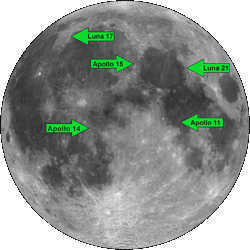
Illustration showing the location of the corner reflectors
In addition, the Soviet Union placed two additional French corner reflectors on the surface of the Moon in 1970 and 1973. These reflectors were installed on the Lunokhod-1 and Lunokhod-2 self-propelled vehicles and each consisted of 14 prisms. The first reflector had an interesting history. It was used for approximately 20 laser location sessions during the first 6 months of the Lunokhod’s operation. However, due to the rover’s unfortunate position, the reflector could not be used until 2010. Only with the help of new images from the Lunar Reconnaissance Orbiter (LRO) was the position of the rover with the reflector clarified, allowing work with it to resume.
The 2.6-meter telescope at the Crimean Observatory in the USSR conducted the largest number of laser location sessions. From 1976 to 1983, a total of 1400 measurements were made on this telescope, with an error margin of 25 centimeters. However, these observations came to a halt due to the discontinuation of the Soviet lunar program.
From 1970 to 2010, a grand total of approximately 17 thousand laser location sessions were carried out worldwide. Many of these sessions were focused on the Apollo-15 corner reflector, which is considered the most advanced and features a record number of prisms, as mentioned earlier.
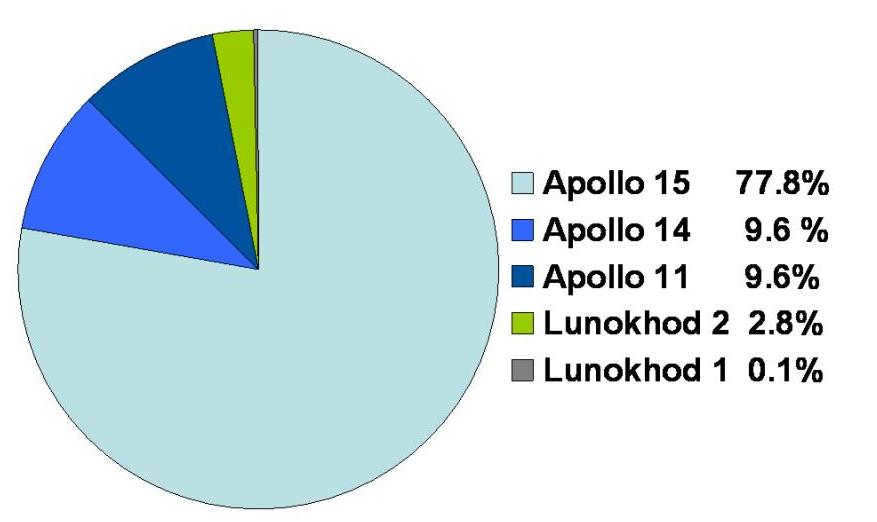
Out of the 40 observatories that have the ability to use lasers to locate the Moon, only a select few are capable of making highly accurate measurements:
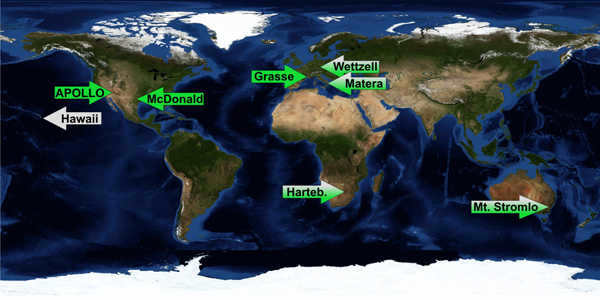
The majority of the incredibly accurate measurements are conducted using the 2-meter telescope located at the Mac Donald Observatory in Texas:
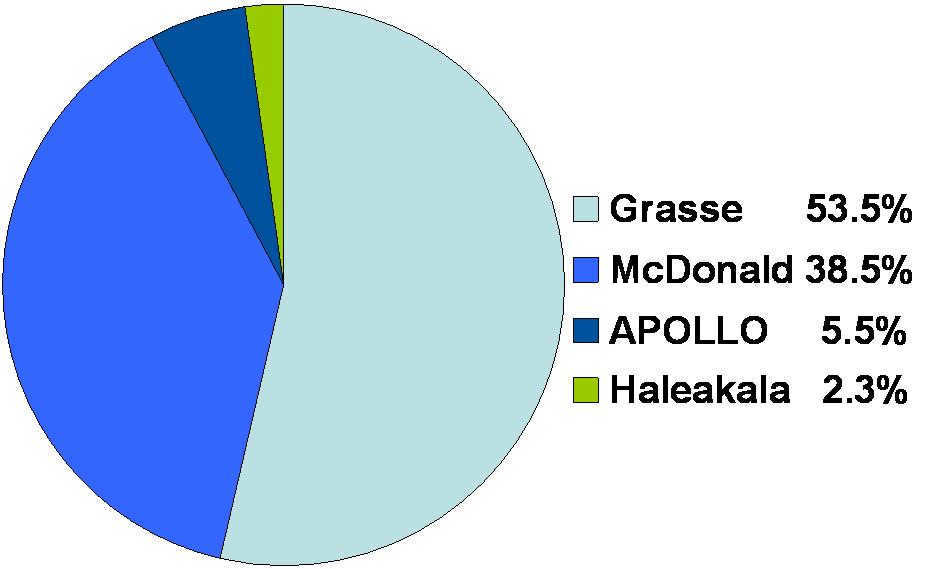
The APOLLO instrument, which was mounted on the 3.5-meter telescope at the Apache Point Observatory in 2006, is responsible for obtaining the most accurate measurements of the distance between the Earth and the Moon. Its measurements have an impressive precision, accurate to the nearest millimeter:
Furthermore, calculations indicate that in the future, the Moon will once again draw near to the Earth as a result of their mutual tidal interaction. When it comes within 12,000 km of the Earth, the Moon will be ripped apart by tidal forces, and the resulting fragments will coalesce into a ring similar to the well-known rings encircling the gas giant planets in our Solar System. Other moons in our Solar System will experience this fate much sooner. For instance, Phobos is expected to meet this fate within the next 20-40 million years, while Triton will experience it in approximately 2 billion years.
Curious information
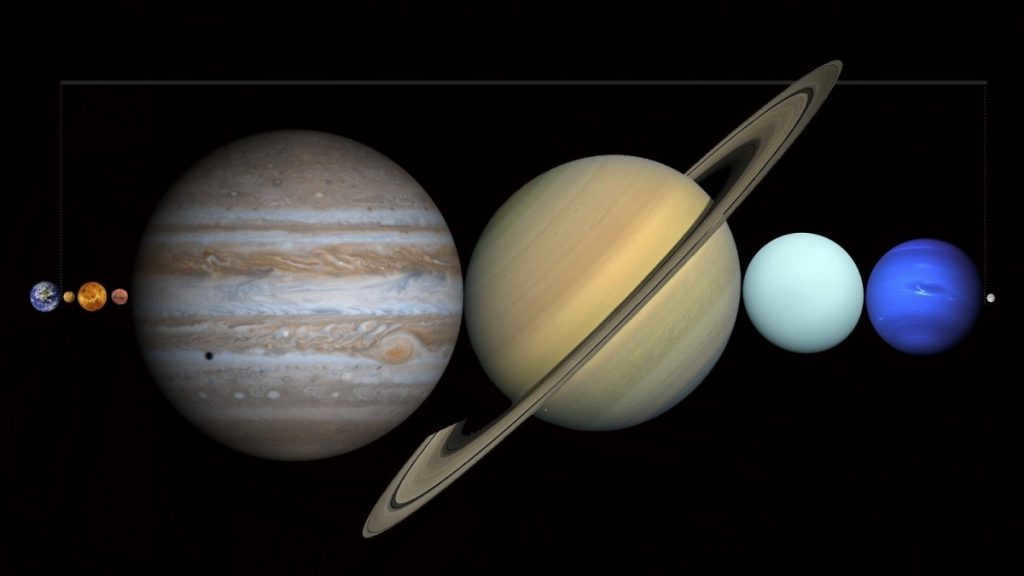

All the other planets of the solar system can fit between the Earth and the Moon.
Each year, the distance to the Earth’s satellite increases by an average of 4 centimeters. This is due to the planetoid moving in a spiral orbit and the gradual decrease in the gravitational interaction between the Earth and the Moon.
It is theoretically possible to fit all the planets of the Solar System between the Earth and the Moon. If you add up the diameters of all the planets, including Pluto, the total distance would be 382,100 kilometers.
In ancient times, the Greeks made multiple attempts to measure the distance from the Earth to the Moon.
It was essential for people to have a comprehensive understanding of the Universe.
Not only did the ancient Greeks calculate the distance to our planet’s satellite, but they also made calculations to determine its radius.
As time went on, technological advancements occurred, and now mankind possesses all the necessary measurements.
What is the method for calculating the distance?
Throughout history, humans have always had a fascination with space and the Moon, which has served as Earth’s natural satellite since ancient times.
Individuals have long been curious about the distance to the Moon and the amount of travel required to reach it, leading to various methods of calculation.
Currently, it is impractical to measure the distance using everyday methods, necessitating the use of trigonometric formulas and calculations.
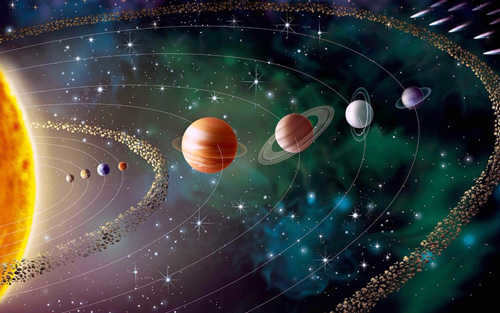
Let’s consider the method used by ancient civilizations to calculate this parameter, keeping in mind that it is measured from the satellite’s center:
- The first person to attempt to uncover the truth was Aristarchus of Samos.
Using geometric equations and measurements taken with angular measuring instruments, Aristarchus conducted an investigation.
By analyzing the angles, Hipparchus discovered that the Sun and the Moon have the same measurements during an eclipse.
He then used this information to calculate the difference and derived a formula to determine the average distance.
Average distance measured in kilometers
The exact measurement of the distance in kilometers is not possible due to the elliptical orbit followed by the satellite as it moves.
This means that at certain times it moves further away from the planet, and then it comes closer again.
Please note that there are multiple numerical values used to describe the kilometer measurement of the distance to the celestial satellite.
The actual distance can vary by up to 15%, which is influenced by the different positions of the satellite.
The distance between Earth and the fullest Moon is much shorter compared to when it is in its growth phase.
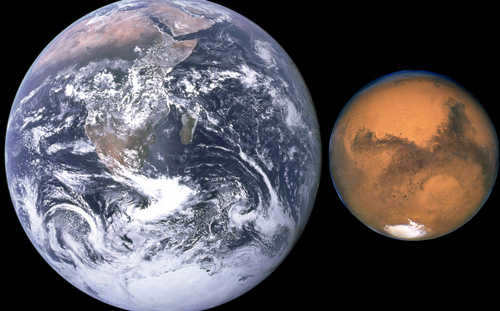
Scientists have determined the distance by using well-known measurements:
| Indicator | Description |
| 384403 kilometers | Astronomers refer to this distance as the major semi-axis, it is measured exclusively in kilometers, no values in meters are utilized in this context. Occasionally, the figure 384467 kilometers is provided, which is inaccurate. |
| 357104 kilometers | This value represents the minimum numerical measurement when the Moon is at its closest point to the Earth. |
| 406696 kilometers. | At apogee, the satellite is situated at the specified number of kilometers from Earth – its farthest point will display this figure. |
Up to now, there have been numerous flights conducted to assess the duration of traveling to the satellite.
Researchers have conducted calculations using the rocket’s speed and observations of astronauts.

There are some figures:
The slowest journey will last for 1 year, 1 month, and 2 weeks, which has been proven in an experiment.
To overcome the gravitational pull of the Sun, Nasa utilized immense acceleration.
Important! The first flight was made by the Soviet satellite Luna-1, which passed by the Moon at a distance of 500 kilometers, reaching its destination in 2 days.
Nowadays, space travel companies worldwide offer trips to the Moon of both short and long duration.
Fascinating Trivia
Every computation undertaken by humans has been accompanied by a plethora of captivating facts and anecdotes. The determination of celestial dimensions, including the distance to our moon, is no exception to this rule.
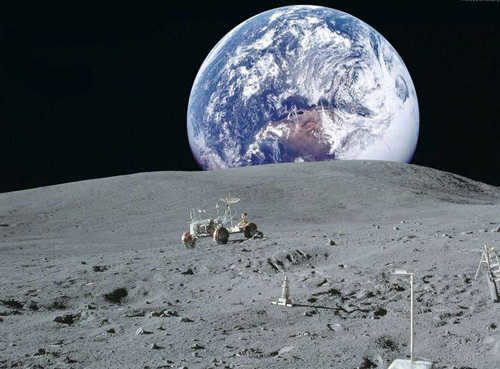
Here are some fascinating examples regarding the history of calculating the duration of flight and the measurement of the distance between the Earth and the satellite:
- According to legend, the Moon originated from the collision of the Earth with another celestial body. This collision led to the formation of an orbit and eventually resulted in the creation of a yellow-white colored satellite.
- The satellite always maintains a consistent orientation towards one side of the planet.
- The largest crater on the Moon is named Bailey, and it has a diameter of 295 kilometers.
- During one of the expeditions, the American Apollo 6 mission successfully brought back several hundred kilograms of lunar soil to Earth.
- From the perspective of an observer on Earth, both the Moon and the Sun appear to be the same size when looking up into the sky.
- The gravitational force acting on the satellite is the smallest, being 6 times less than the gravitational force on Earth.
- There is a memorial to the deceased astronauts on the surface of the satellite in the form of a 10 centimeter aluminum figure.
- Over time, the Moon has significantly moved away from Earth, with an annual increase in distance of 4 centimeters.
- The closest distance between the Moon and Mars is 55 million 399 thousand kilometers.
It is known that there are plans for regular flights to Mars in the future, and it would be much more convenient to launch them from the surface of the satellite.
By calculating the distances to the Moon, flight organizers can accurately determine the amount of fuel required and the cost of the flight.
Handy video
Throughout history, mankind has been driven to understand the structure of the world and discover their place within it. Over thousands of years, the human mind has persevered and demonstrated ingenuity, bringing us closer to an objective understanding of the world, despite the subjective and often false perceptions influenced by culture. One of the initial challenges in this pursuit is determining the scope of the world that surrounds us.
In this article, I will take you on a journey through the history of humanity’s quest to comprehend the vastness of the universe, starting from the brilliant minds of ancient Greece to the modern era of advanced technology. You will discover why the concept of a “flat Earth on three whales” was met with laughter even by the ancient Romans, how the contemporaries of the Sun King measured interplanetary distances, and how cosmic cataclysms have contributed to our understanding of the immense scale of the universe.
The magnitude of Greek brilliance
Ancient philosophers from Greece were among the earliest to embark on a cognitive exploration of the enigma of the magnitude of our planet. Standing out among them is Aristarchus of Samos (4th-3rd century BC), one of the most eminent ancient astronomers, who opted to compute the proportional distances between the Earth, the Sun, and the Moon using the rather sophisticated geometric tools available during his era.
Aristarchus made a correct assumption that the Moon has a spherical shape and receives light from the Sun. As a result, during the half-moon phase, the Sun’s rays fell on the Moon at a perfect right angle to the Earth observer’s line of sight. This allowed for the measurement of the angular distance between the centers of the Moon and the Sun in the Earth’s sky, which in turn made it possible to calculate relative distances using principles of triangle geometry. The measured angle was 87 degrees, based on which Aristarchus determined that the Sun was 19 times farther from the Earth than the Moon. Since the angular sizes of the Sun and the Moon in the sky were found to coincide (as evidenced by solar eclipses), Aristarchus concluded that the Sun is approximately 20 times larger than the Moon.

As we have already demonstrated, the tangent of the angle 87° is 19.08. Similarly, the tangent of the angle 89° is slightly more than 57, and the tangent of the accurate square ~89.85° is close to 400. Thus, this approach requires a high level of precision when determining the value of angle alpha.
The scientist took it a step further and made the determination of the relative sizes of the Moon and the Earth by observing lunar eclipses. Once again, correctly deducing that the Moon is covered by the Earth’s shadow, and noticing that the angular size of the shadow in the Moon’s orbit is twice as large as the Moon itself, Aristarchus concluded that the radius of the Earth (taken as a conventional unit) is greater than the radius of the Moon by a factor of 3 (modern estimate 3.6). In this particular case, it was revealed that the radius of the Sun is more than 6 times greater than the radius of the Earth (modern estimate 109 times).
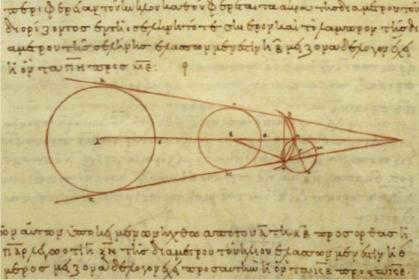
An ancient Greek method for calculating the distance to the Moon and determining its size
It is said that Aristarchus was the first person in history to propose the idea that the Earth revolves around the Sun, rather than the other way around. This idea was sparked by his observation of the Sun’s enormous size. When questioned about why the positions of the stars do not change as a result of the Earth’s movement (lack of parallax), Aristarchus suggested that the distance to the stars is so vast compared to the Earth’s orbit that parallax is not visible to the naked eye. However, this concept did not gain widespread acceptance in ancient times, possibly due to religious reasons (religious censorship in the scientific world is not exclusive to the Christian Middle Ages).
One hundred years later, Hipparchus of Nicaea, another Greek astronomer, made a more precise determination of the Earth’s shadow and the Moon’s angular dimensions. He found that the Earth was 3.5 times larger than the Moon. Hipparchus already knew that any object appears to be 1 minute in size when observed at a distance of 3,483 times its actual size. Using the Earth’s radius as a unit and knowing the Moon’s angular size, Hipparchus calculated the distance to the Moon as 60 times the radius of our planet (almost the same as today). Based on Aristarchus’ works, calculations yielded a result of 80 times the radius of the Earth.
Nevertheless, the Greek intellect was not satisfied with just measuring distances within the Earth’s radii. They wanted to know the actual size of our planet. This task was undertaken by Eratosthenes of Cyrenaica, a scientist from Alexandria who lived in the same era as Aristarchus.
Eratosthenes hypothesized that, similar to the Sun, Moon, and celestial sphere, the Earth possesses a spherical shape, as postulated in Aristotle’s philosophy. He also reasoned that, just as the celestial sphere is intersected by meridians, these imaginary lines can also cross the Earth’s surface. By calculating the circumference of the Earth’s meridian, one could determine the Earth’s radius. Eratosthenes positioned the conceptual meridian along the line connecting the Egyptian cities of Alexandria and the southerly city of Siena. Furthermore, assuming that both cities were nearly equidistant from the Sun, Eratosthenes measured the height of the Sun above the horizon in each city by observing the length of the sundial’s shadow precisely at noon during the summer solstice. With knowledge of the latitudinal distance between the cities and the angle of the sun’s rays in each location, the entire length of the meridian could be easily calculated.
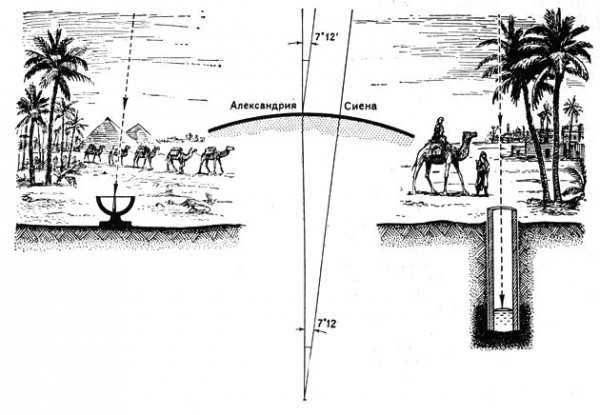
Eratosthenes determined the Earth’s radius to be 250,000 stadia. However, it is unclear whether he used Egyptian or Greek stadia. If he used Egyptian stadia, the margin of error relative to the true size is 1.5%. Even if he used Greek stadia, the result is still impressive – 7080 km (compared to the actual radius of 6378km, resulting in an error of approximately 10%).
The classical work “Mathematical Collection in 13 Books” by the ancient Greek astronomer Claudius Ptolemy (2nd century AD) was a synthesis of the ancient concept of the structure of the Universe. Ptolemy’s geocentric system was not only based on the philosophy and authority of Aristotle, but also on a robust mathematical framework, as well as the observations of numerous respected ancient astronomers, including Hipparchus.
Even in ancient times, it was observed that the planets, the Moon, and the Sun follow a specific “corridor” on the celestial sphere, passing through 13 constellations (which eventually became the Zodiac). The annual path of the Sun along this corridor was referred to as the ecliptic. However, unlike the Moon and the Sun, the planets do not move uniformly, exhibiting circular motions (retrograde motion) that can be seen in the video below.
Ptolemy devised a sophisticated mathematical model to explain the motion of celestial bodies and accurately predict their future positions. This model was able to calculate ephemerides, which are the positions of planets, with an unprecedented accuracy of 10 minutes of arc, equivalent to one third of the Moon’s full disk. According to Ptolemy’s system, the planets moved in circular motions on epicycles, with the center of these epicycles orbiting around a central point. This central point was located at a distance from the Earth. Although this system may have seemed unrealistic, it effectively compensated for the errors in calculating the positions of celestial bodies.
Even prior to Ptolemy’s time, the ancient Greeks possessed a deep understanding of the dynamics of celestial bodies and even developed primitive computing devices, such as the Antikythera mechanism, to calculate ephemerides and predict eclipses.
Reconstructing the Antikythera “computer” with a Lego kit
Geocentrism remained the foundation of cosmology until the late 17th century, undergoing refinement and complexity during the Middle Ages by scholars in both Christian and Muslim societies. Ptolemy’s research was also heavily relied upon for maritime navigation during the early stages of the Age of Exploration.
Embarking on the Journey to the “New World” through Fantasy
During the Middle Ages and late antiquity, the prevailing belief among philosophers and theologians was that the Earth was spherical. However, there were disagreements regarding its size, which led to various discrepancies.
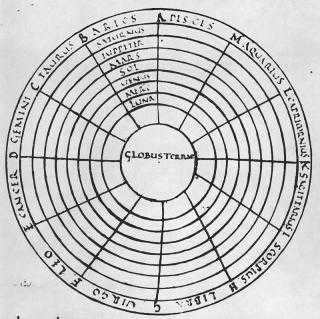
Globus Terrae (“Earth globe”) based on the geocentric model of the early Middle Ages
In 1492, the Italian explorer Christopher Columbus, serving the Spanish crown, set sail westward with the belief that the Earth was half the size estimated by Eratosthenes and had a pear-shaped form. The discovery of “India” initially seemed to support the critics of Eratosthenes’ theory, but this notion didn’t last long. The voyages of Amerigo Vespucci, another Italian explorer and acquaintance of Columbus, would later convince Europeans that Columbus had actually discovered the “New World” and not a new route to Asia. As a result, the newly discovered landmass became known as America, in honor of the famous explorer.

Amerigo Vespucci in front of his map of the southern portion of the New World
The confirmation of Eratosthenes’ Earth model would come 30 years after Columbus’ initial journey, thanks to the first-ever circumnavigation of the planet by a Spanish fleet under the leadership of Portuguese explorer Fernan Magellan.
The Era of Remarkable Astronomical Breakthroughs
Following the experiential realization of the vastness of our planet, the human intellect turned its attention towards comprehending the vastness of the universe. In 1543, the Polish astronomer Nicolaus Copernicus completed his monumental 40-year work titled “On the Rotation of the Heavenly Spheres,” which marked the beginning of the decline of the Ptolemaic system and the emergence of the heliocentric system. Surprisingly, despite the flourishing of the Holy Inquisition, the Church initially embraced Copernicus’ work. His system was significantly simpler than the Ptolemaic system, greatly facilitating calculations of celestial positions. It is worth noting that one of Copernicus’ acquaintances, against his wishes, appended a remark to the book, stating that the heliocentric system was merely a mathematical construct with no connection to reality.
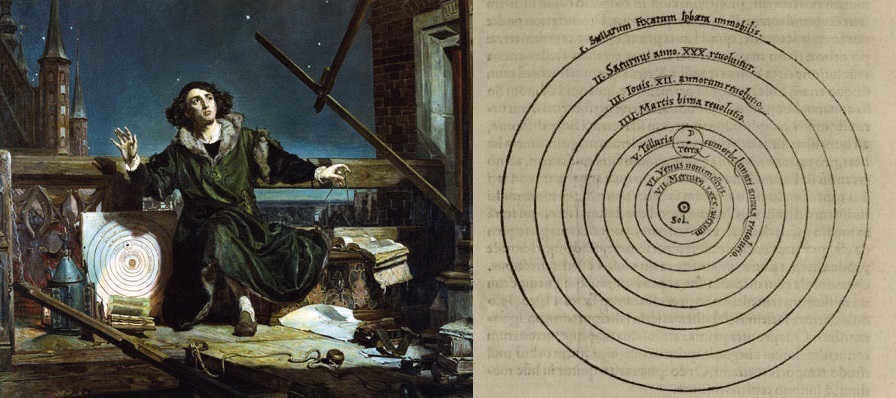
“Copernicus. Conversation with God” is a famous artwork by Matejko. On the right side of the painting, there is a fragment that depicts a diagram of the heliocentric system of the world.
Copernicus correctly interpreted the retrograde motion of the planets by observing that as the Earth moves around the Sun in its orbit, it first catches up with the outer planet causing it to gradually slow down on the celestial sphere. Eventually, the Earth overtakes the outer planet, causing it to come to a stop and move backwards. By analyzing the angles of the retrograde motion, Copernicus was able to determine the relative distances of the planets from the Sun, which is similar to what Ptolemy and Aristarchus believed. Ptolemy thought that the Sun was located 20 radii away from the Moon’s orbit. Copernicus, on the other hand, was the first to establish the order of the planets’ distances from the Sun, providing an explanation for why Venus and Mercury do not move more than 45 degrees away from the Sun as they orbit within the Earth’s orbit.
In light of these deficiencies in the Copernican system, the renowned Danish astronomer (or perhaps astrologer), Tycho Brahe, who resided in the latter half of the 16th century, proposed his own rendition of the planetary system. Essentially, it mirrored heliocentrism, with all the planets orbiting the Sun, but with the Sun itself revolving around the Earth, positioned at the center of the cosmos. In this manner, Brahe accounted for the absence of parallax, dismissed the notion of a “superfluous entities” vast void between the planets and the sphere of stars, and also satisfied the tenets of scholasticism (a medieval Christian philosophy heavily influenced by Aristotelianism).
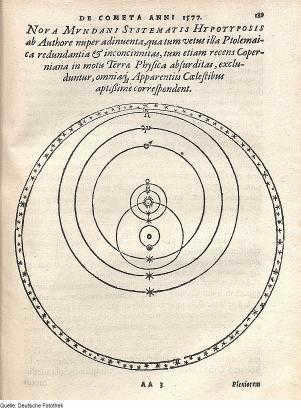
The Geo-Heliocentric System of Brahe
Tycho Brahe gathered a vast amount of scientific material, creating new star catalogs of unparalleled precision, and for the first time in history, he established a solid statistical foundation for observing the movement of planets, especially Mars. Due to his meticulous approach, Brahe is often hailed as the first true scientist in history. Interestingly, despite his scientific endeavors, Brahe identified himself as an astrologer (a sentiment shared by Ptolemy and Copernicus), openly acknowledging the inseparable connection between astrology and astronomy.
Mars, the “apple” of gravitational attraction in the universe
Ironically, the work of Tycho Brahe played a significant role in the development of the heliocentric theory. Johannes Kepler, a renowned German astronomer, astrologer, and friend of Brahe, formulated the first laws of planetary motion based on Brahe’s observations of Mars. Kepler’s groundbreaking work proposed that the speed of planetary motion decreases as the distance from the Sun increases, and that the orbits of the planets are not circular (as believed by Copernicus), but rather elliptical with the Sun situated at one of the foci. This advancement greatly enhanced the Copernican system by eliminating the need for epicycles, which were used to account for irregular orbital motion in the Ptolemaic system. Kepler’s equation enabled the calculation of a planet’s velocity at any point in its orbit and the determination of its orbital period. Despite his contributions to the heliocentric theory, Kepler maintained his belief in a spherical arrangement of stars and argued against the existence of an infinite universe filled with stars, a concept later referred to as the photometric paradox by Edmund Halley.
Doodle commemorating the 442nd birthday of Johannes Kepler. The illustration shows the scientist positioned at the center of the Earth, orbiting in an elliptical trajectory with the Sun at one of its focal points. It is evident that the velocity of the planet decreases as it moves farther away from the Sun. In tribute to the scientist, the spacecraft “Kepler” was named and from 2009 to 2013, it discovered over 1000 exoplanets.
Despite the less-than-ideal accuracy of Kepler’s system, the Catholic Church prohibited its followers from accepting heliocentrism as anything more than a theoretical mathematical concept for a period of two hundred years starting in 1616. Similarly, Protestant church leaders viewed heliocentrism as “abominable”. It is important to note that during the early 17th century, when science was rapidly advancing in Europe, there were also destructive religious conflicts and a highly publicized trial of a renowned scientist.

Galileo facing the Inquisition (painting by Cristiano Banti).
However, the advancement of scientific thought was not deterred. With the discovery of Kepler’s laws and the invention of the telescope, the heliocentric model of the solar system experienced significant progress during the 17th century. Scientists were able to accurately determine the relative positions of planetary orbits within the solar system, using the Earth’s orbit as a unit of measurement. Kepler’s celestial mechanics were so precise that it became possible to calculate the absolute distance between any two celestial bodies within the solar system, ultimately leading to a comprehensive understanding of its size (with Saturn being the furthest known planet at that time).
The solid statistics of Mars observations once again played a crucial role in advancing scientific understanding. In 1672, during the reign of Louis 14th, renowned French astronomers Cassini and Richet were able to calculate the parallax of Mars in relation to distant stars, thus determining its absolute distance for the very first time. This groundbreaking achievement allowed Cassini to accurately calculate the astronomical unit to be 146 million kilometers (slightly different from the modern value of 149 million kilometers). Just three years later, in 1675, Danish astronomer Remer, who collaborated with Cassini in Paris, discovered a discrepancy in the calculations of Jupiter’s satellites’ motion and successfully determined the finite speed of light with an approximate error of 30% (1676).
A diagram illustrating the parallax of Mars. Two observation points, Cassini in Paris and Richet in Cayenne, South America, were used to measure the difference in the position of Mars relative to the stars. This allowed scientists to determine the distance to the planet.
Isaac Newton, drawing on Kepler’s theories of celestial mechanics, made a groundbreaking discovery in 1687: the laws of universal gravitation. These laws not only enhanced our understanding of celestial mechanics, but also provided a description of how gravitational forces interact within our solar system. This revolutionary breakthrough in astronomical observations paved the way for advancements in various scientific disciplines. Over time, the measurement of the astronomical unit became more precise, eventually benefiting from radar technology in the 20th century. In the 18th and 19th centuries, astronomers used the parallax of Venus as it crossed the Sun’s disk to refine these measurements. It was during one of these passages that Lomonosov made a significant discovery in 1761: the existence of Venus’s atmosphere.
In 1781, the English astronomer Herschel made a remarkable discovery while searching for stellar parallax. His observations led to the identification of the planet Uranus. Another significant breakthrough in celestial mechanics occurred in 1846 when the English astronomer Adams and his French colleague Leverrier discovered Neptune. Their remarkable findings were made possible through meticulous calculations and precise observations, leading to the recognition of Neptune “at the tip of a pen.”
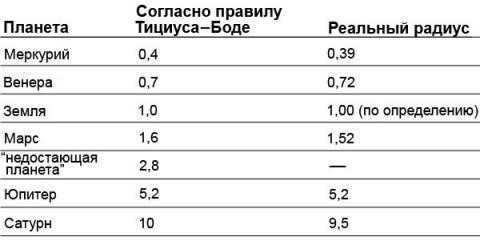
The Titius-Bode rule, which was popular among scientists at the time, was indirectly confirmed by the orbital parameters of Uranus. This rule is a simple arithmetic pattern that predicts the distances of planets from the Sun. As scientists searched for a missing planet between Mars and Jupiter in the early 19th century, they stumbled upon the asteroid belt. However, the discovery of Neptune disproved this mathematical curiosity. Additionally, the total mass of the asteroids in the belt, which is said to have “destroyed Phaeton,” did not exceed 5% of the mass of the Moon.
The completion of a comprehensive understanding of the mechanics of the planets in our solar system would only occur in the 20th century, thanks to Einstein’s theory of relativity, which successfully explained the anomalies observed in the orbit of Mercury. However, as early as the 18th century, the quest for stellar parallax began, as the human mind sought to break through the barrier of the “sphere of stars” and explore the vastness of interstellar space.
In the second part of this chronicle, I will unveil a truly captivating detective story that unravels the determination of interstellar distances by humans and takes us on a journey to the very edge of the visible Universe.

If you have ever had any curiosity about space and our position within it, you have surely pondered the exact distance between the Earth and the Moon.
The heightened focus on the Moon can be easily explained. It is the natural satellite of our planet and is located closer to the Sun than any other satellite. This closeness makes it intimately connected to us. It is also worth mentioning that it is the second brightest object and the fifth largest object in the solar system, although these rankings are relative.
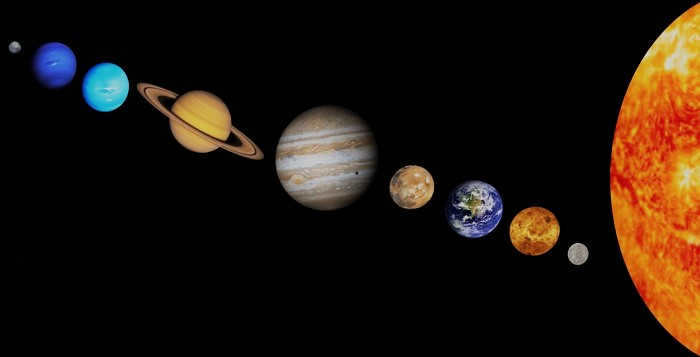
Methods for Calculating the Distance from Earth to the Moon
The discovery of the Moon, Earth’s satellite, dates back to ancient times. Even back then, people were curious about its distance from our planet.
Various scientific methods were employed by astronomers of the past to calculate the precise distance between Earth and the Moon.
Thanks to advancements in modern astronomy and space technology, we have not only explored the Moon but also measured its distance accurately. However, how did ancient astronomers manage to calculate this distance?
In reality, the Moon was the first celestial object whose distance they were able to determine. It was the ancient Greek scientists who achieved this remarkable feat.
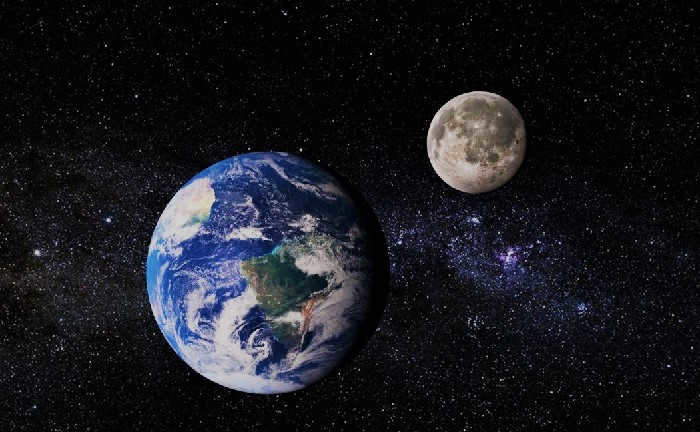
Take, for instance, Aristarchus of Samos. He calculated the angle between the Sun and the Moon as 87 degrees. Consequently, it can be deduced that the celestial body’s satellite is 20 times nearer to our central luminary. Nowadays, we are aware that this perspective is erroneous. Naturally, during that era, the astronomer relied on convenient instruments for his computations and lacked the information that is at our disposal today. Nevertheless, he undoubtedly made a significant contribution to the field.

In the time period preceding our era by several hundred years, Eratosthenes of Cyrenaica calculated the Earth’s radius. It is fascinating to note that his calculations were not far off from modern measurements. What is even more astonishing is that he was able to use the radius of the planet to calculate the distance to the Moon. While the ancient calculations may not have been entirely accurate, they served as a crucial starting point for further exploration of this topic.
Another scientist, Hipparchus of Nicaea, also offered his perspective based on observations of the Moon’s movement. He believed that the distance between the Earth and the Moon is 60 times greater than the radius of the planet.

Contemporary calculations
Presently, astronomers not only determine the distance between Earth and the Moon, but also calculate the orbit of our satellite. It has been discovered that the Moon is in constant motion, resulting in the space between us continually changing.
Based on accumulated knowledge, modern methods have been developed to accurately measure the distances between celestial bodies.
Contemporary calculations are founded on Brown’s theory, which was formulated during the 19th and 20th centuries. At that time, it utilized a trigonometric formula consisting of over 1400 elements. Additionally, it accounted for the motion of the Moon.
Currently, various techniques are employed for measuring the distance between celestial bodies. One such method is radar, which offers a precision of a few kilometers in determining the gap.
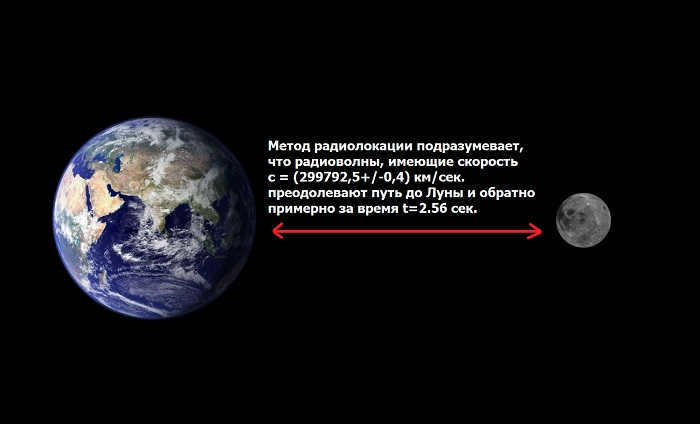
The technique of laser location is one of the specific methods used to measure distance. It is capable of determining distance with a high level of accuracy, usually within a few centimeters. This method involves the use of angular reflectors that were placed on the surface of the Moon.
To carry out this measurement, the entire Apollo program was launched in 1970. As part of this program, several reflectors were successfully transported and installed on the Moon’s surface. This enabled scientists to conduct laser location sessions, ultimately leading to the determination of the most precise distance between the Earth and the Moon.
In addition to the practical measurements, theoretical calculations also provide the same level of reliability in determining this distance.
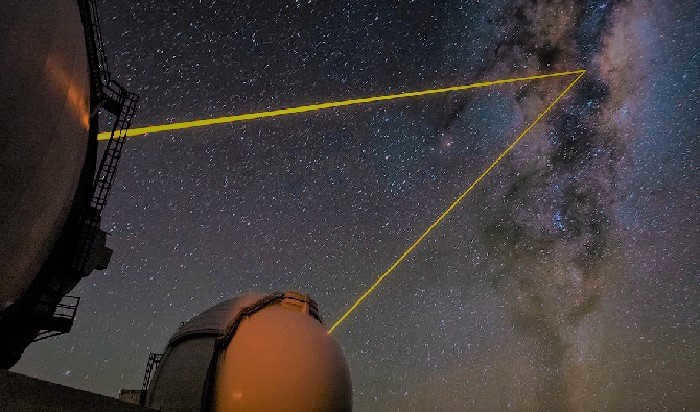
What is the equivalent distance between Earth and the Moon?
Due to the Moon’s constant movement, the distance to it is always changing. The satellite of our planet periodically gets closer or further away from Earth. That’s why scientists calculate the average distance, which is measured between the axes of the two bodies. This measurement is done in kilometers, and it takes into account the objects’ motion periods, phases, cycles, and interaction periods.
Currently, the distance from Earth to the Moon is 384399 kilometers. However, it is often rounded to an average of 384400 km.

To conclude, it can be stated that the constant movement of celestial bodies demands attention as it leads to changes in their characteristics and the distance between them. Undoubtedly, modern astronomy continues to observe and study the universe, which holds great significance.
A couple of intriguing facts
Out of all astronomical objects, the Moon is the only one that has been explored by humans (excluding Earth).
There exists a phenomenon known as the Moon illusion. When the Moon is positioned below the horizon line, it creates a visual deception, making it appear larger than when it is high in the sky.
As we are aware, light is the fastest entity in the world. It takes slightly over a second for light to travel from the Earth to the Moon.
In theory, the space between the Earth and the Moon would be able to accommodate all the planets in our solar system.


Space and the Moon have always piqued the curiosity of humanity, as the Moon has been Earth’s natural satellite for centuries.
People have always wondered about the distance to the Moon and the time it takes to reach it, utilizing various calculations.
Modern-day, it is unfeasible to measure this distance using everyday methods.
Instead, trigonometric formulas and calculations are employed for this purpose.
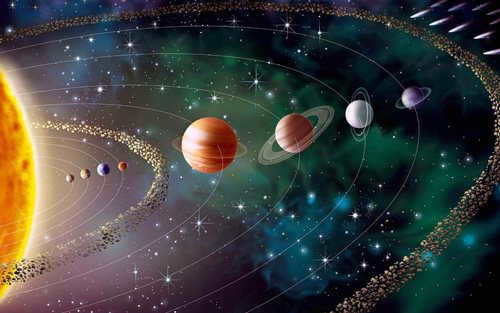
Consider the methods ancient civilizations used to determine the distance from the Earth to the Moon, taking into account that it is measured from the center of the satellite:
- The first person to attempt to uncover the truth was Aristarchus of Samos. Using geometric equations and measurements obtained with angular measuring devices, the scientist conducted a thorough investigation. Initially, he calculated the difference between the distance to the satellite and the Sun, and then multiplied this result by the radius of the Earth. His calculations revealed that the distance is approximately 509,680 kilometers.
- In the 2nd century BC, astronomer Hipparchus of Nicaea embarked on the task of calculating. He meticulously observed the various phases of the Moon and deduced that the Earth’s distance would amount to 382260 kilometers.
Utilizing his angular measurements, Hipparchus discovered that the Sun and Moon appeared identical during an eclipse. From this observation, he proceeded to calculate the disparity and devised a formula to ascertain the average distance.
What is causing the Moon to move away from the Earth?
The Moon’s movement away from the Earth can be attributed to various factors. One of these factors is the principle of inertia, which states that any moving object tends to continue moving in a straight line. In the case of the Moon, it wants to break away from its circular orbit around the Earth and move tangentially to it.
This desire to break away from the axis of rotation is known as centrifugal force. You may have experienced centrifugal force at a children’s park while riding speed swings or when riding in a car that swerves, causing you to be pressed against the door. The word “centrifugal” means “running from the center.”
Similarly, the Moon is also affected by centrifugal force, but it is held in its orbit by the gravitational force of the Earth. The Moon remains in orbit because the centrifugal force is balanced by the force of Earth’s gravity. It is important to note that the closer a planet is to its satellite, the faster it revolves around it.
What is the cause? The reason behind it is that any object in motion possesses a certain quantity of motion known as momentum. In the case of a rotating body, its momentum is influenced by factors such as mass, velocity, and distance from the axis of rotation. To calculate the momentum, these three quantities are multiplied together. Researchers have discovered that the momentum of a specific body remains constant. Hence, when an object moves closer to the axis of rotation, it will rotate at a faster speed due to the law of conservation of momentum, as the mass in this equation cannot be altered arbitrarily.
Average Kilometer Distance
Providing precise measurements of distance in kilometers is not feasible due to the elliptical orbit followed by satellites as they move.
This implies that the satellite moves away from the planet for a certain period of time and then approaches it again.
Be aware! There exist multiple numerical outcomes for describing the kilometer distance to a celestial satellite.
The actual size can vary by up to 15% due to the satellite’s different positions.
The distance between the Earth and the fullest Moon is much shorter compared to its distance during the growth phase.
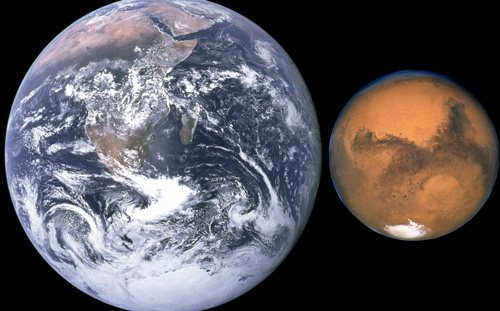
Scientists have measured the distance from the Earth to the Moon using various indicators:
| Indicator | Description |
| 384403 kilometers | This distance, known as the great semi-major axis, is measured in kilometers and not meters. It is the most commonly used measurement, although sometimes the figure of 384467 kilometers is mistakenly given. |
| 357104 kilometers | This is the minimum distance between the Earth and the Moon, which occurs when the Moon is at its closest point to our planet. |
| 406696 kilometers. | At apogee, the Moon is farthest from the Earth and is located approximately 406696 kilometers away. |
Diameter of the Moon
The Moon has an average diameter of 3474.1 km, which is relatively small compared to other celestial objects. To put it into perspective, this is roughly half the distance between Moscow and Vladivostok.
Despite its modest size, the Moon is the fifth largest natural satellite in our solar system:
When comparing the sizes of satellites in relation to their planets, the Moon stands out as the largest. Its diameter is a quarter of Earth’s diameter, making it the largest satellite in proportion to its planet. It is even larger than Pluto.
Duration of the Journey
Up until now, numerous flights have been conducted to determine the time it takes to reach the satellite.
Researchers have conducted calculations by considering the rocket’s velocity and observing the astronauts.
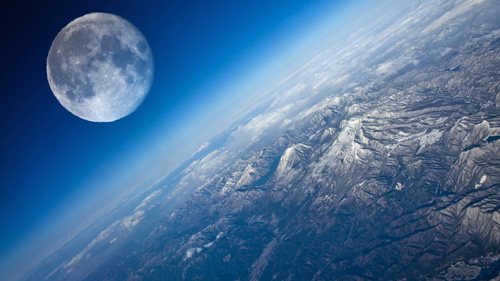
Here are some numbers:
- The slowest flight took 1 year 1 month and 2 weeks to complete, which was demonstrated in an experiment. Back in 2003, a lunar probe was launched using a groundbreaking ion-powered station known as ESA SMART-1.
- The average flight lasted 5 days when the Chinese satellite Chang’e-1 was sent into orbit in 2007: the flight utilized conventional rocket engines.
- A manned flight lasted 3 days 3 hours and 49 minutes when the Americans first set foot on the Moon’s surface in 1969 – the Saturn-5 spacecraft was launched from a site in Florida.
- The shortest route was accomplished by the Americans in the New Horizons project: the satellite’s speed was 58 thousand kilometers.
To overcome the gravitational pull of the Sun, Nasa employed a tremendous amount of acceleration.
It is noteworthy that the Soviet satellite Luna-1 accomplished a groundbreaking achievement by successfully completing the first ever flight, covering a distance of 500 kilometers from the Moon within a span of 2 days.
In the present day, various space tourism companies from across the globe present enticing opportunities for individuals to embark on memorable journeys to the Moon, ranging from brief excursions to extended expeditions.

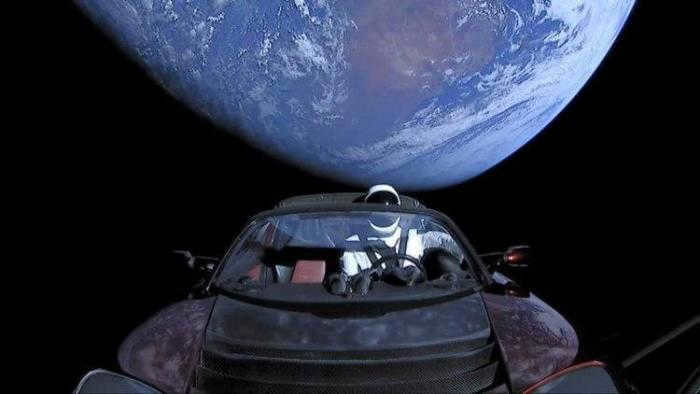
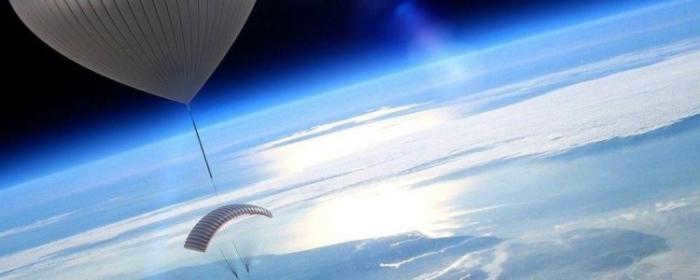
Spacecraft will have to spend a considerable amount of time traveling to the Earth’s satellite. The Moon cannot be reached in a direct path – the planet will deviate from its intended course and the trajectory will need to be adjusted. At a second space velocity of 11 km / s (40,000 km / h), the journey theoretically would take approximately 10 hours, but in reality, it will be longer. This is because the spacecraft gradually gains speed during takeoff in the atmosphere, reaching a value of 11 km / s to break free from the Earth’s gravitational field. Then, as the spacecraft approaches the Moon, it will need to decelerate. Interestingly, this velocity is the highest that has been attained by modern spacecraft.
The infamous American journey to the Moon in 1969 reportedly lasted for 76 hours, as stated by official records. NASA’s New Horizons holds the record for the fastest journey to the Moon, reaching it in just 8 hours and 35 minutes. However, its mission did not involve landing on the celestial body, but rather flying past it.
It takes approximately 1.255 seconds for light to travel from the Earth to our satellite, making it a remarkably fast journey. Nevertheless, traveling at the speed of light remains a mere fantasy.
To put the journey to the Moon into perspective, let’s consider it in terms of familiar modes of transportation. If we were to walk at a pace of 5 km/h, it would take us approximately nine years to reach the Moon. Driving a car at a speed of 100 km/h would shorten the journey to approximately 160 days. If airplanes were capable of flying to the Moon, the flight would take approximately 20 days.
There have been numerous fascinating facts and stories surrounding any calculations conducted by humans. The measurement of space and the distance to the moon is no exception to these occurrences.
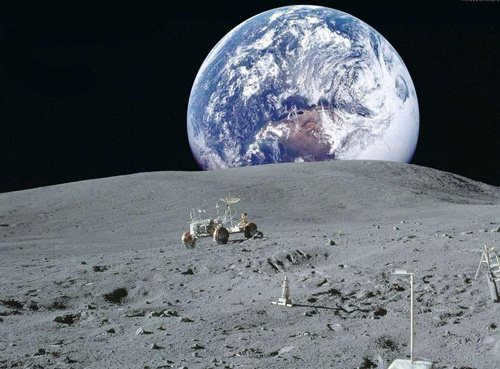
Here are some fascinating facts related to the history of calculating the distance from the Earth to the Moon:
- Legend has it that the Moon was formed when the Earth collided with another planet, resulting in the creation of an orbit and the formation of a yellow-white satellite.
- The Moon always presents the same side to the Earth.
- The largest crater on the Moon is named Bailey and has a diameter of 295 kilometers.
- During one of the expeditions, the American Apollo 6 brought back several hundred kilograms of lunar soil to Earth.
- When viewed from Earth, it appears that the Moon and the Sun have the same size.
- On the Moon, night falls immediately due to the absence of atmosphere, without a gradual dimming of light.
- The gravitational force on the satellite is the lowest, being 6 times less than the gravitational force on Earth.
- A 10 centimeter aluminum figure stands on the surface of the satellite as a memorial to the deceased astronauts.
- Over the years, the Moon has been steadily moving away from the Earth, increasing its distance by 4 centimeters annually.
- The closest distance between the Moon and Mars is 55 million 399 thousand kilometers.
Although regular missions to Mars are planned for the future, it is much more convenient to conduct them from the Moon’s surface.
The calculation of distances to the Moon is crucial for flight organizers to accurately determine the required amount of fuel and the associated expenses.
Advancements in Measuring the Distance to the Moon
It was only with the advent of the telescope that astronomers were able to obtain relatively precise measurements of the Moon’s orbit parameters and its size in relation to Earth.
A more precise method of measuring the distance to the Moon emerged with the development of radar technology. The United States and Great Britain conducted the first radar-based measurements of the Moon in 1946. This new technique enabled distance calculations with an accuracy of a few kilometers.
A more precise method of measuring the distance to the Moon was achieved through laser location. In the 1960s, a series of corner reflectors were installed on the Moon to facilitate this process. It is worth noting that laser location experiments were conducted prior to the installation of these reflectors on the Moon’s surface. From 1962 to 1963, the Crimean Observatory of the USSR conducted several experiments using telescopes ranging from 0.3 to 2.6 meters in diameter to determine the distance to individual lunar craters with an accuracy of several hundred meters. Between 1969 and 1972, the Apollo astronauts placed three corner reflectors on the Moon’s surface. The reflector from the Apollo-15 mission was particularly notable, consisting of 300 prisms, while the other two reflectors from the Apollo-11 and Apollo-14 missions each contained only one hundred prisms.
In the Soviet Union, the Crimean Observatory conducted the largest number of laser location sessions using the 2.6-meter telescope. From 1976 to 1983, a total of 1400 measurements were carried out on this telescope with an error margin of 25 centimeters. However, the observations were eventually halted due to the discontinuation of the Soviet lunar program.
Between 1970 and 2010, a total of approximately 17 thousand high-precision laser location sessions were conducted worldwide. The majority of these sessions were focused on the Apollo 15 corner reflector, which is the most advanced and features a record-breaking number of prisms.
Out of the 40 observatories capable of laser localization of the Moon, only a select few possess the capability to perform high-precision measurements.
The majority of these ultra-precise measurements are carried out using the 2-meter telescope at the Mac Donald Observatory in Texas.
In the meantime, the APOLLO instrument, which was installed on the Apache Point Observatory’s 3.5-meter telescope in 2006, provides the most accurate measurements. Its precision is within one millimeter:
How to visually gauge the Moon’s size and its distance from Earth
The Moon’s diameter is approximately one-fourth that of the Earth.
Additionally, it has a volume 64 times smaller. The distance from our planet to the Moon is roughly 30 times the Earth’s diameter. To visually estimate this distance and compare the sizes, you will need two balls: a basketball and a tennis ball. Here are the diameter ratios:
- The Earth (12,742 km) to the Moon (3,474.1 km) is 3.7:1 ;
- A standard basketball (24 cm) to a tennis ball (6.7 cm) is 3.6:1.
The values are relatively similar. Therefore, if we were to imagine the Earth as a basketball, its satellite would be equivalent to a tennis ball.
You can invite individuals to envision
that the Earth resembles a basketball and the Moon resembles a tennis ball, and demonstrate the distance between the satellite and the planet on that scale. Most individuals would probably estimate a distance of 30 centimeters to a few steps.
In reality, to accurately depict the distance, you would need to take a step back a little more than seven meters. So, the average distance between a planet and its satellite is 384,400 kilometers, which is approximately 30 Earths or 30 basketballs. Multiplying the diameter of a sports projectile by 30 produces a measurement of 7.2 meters. That is roughly equivalent to 9 steps for men or 11 steps for women.
Does the Moon’s size change?
While the actual diameter of the Moon remains constant, its apparent size can vary. For instance, the Moon appears larger during sunrise and sunset.
When the Moon is low on the horizon, the distance to the observer doesn’t actually decrease, but instead slightly increases (by the radius of the Earth). This visual effect may seem counterintuitive. The exact cause of this illusion is still unknown. However, we can confidently say that this beautiful phenomenon is solely due to the peculiarities of the human brain and not influenced by the Earth’s atmosphere, for example.
The distance between the Moon and the Earth goes through periodic changes, reaching its maximum at apogee and minimum at perigee. Along with this distance, the apparent size of the Moon also varies, ranging from 29.43 to 33.5 arc minutes. Because of these variations, not only total eclipses can occur.
Annular eclipses are also possible, which happen when the apparent size of the Moon at apogee is smaller than the size of the solar disk. About once every 414 days, the full moon coincides with the perigee passage, allowing for the observation of the largest nighttime luminary. This phenomenon is commonly known as a super moon, but the visible diameter during this time is only 14% larger than usual. The difference is quite insignificant, and an average observer would not notice it.
Precise measurements have made this understanding possible.
Scientists have observed a gradual increase in the distance between the Earth and its satellite. The Moon is moving away at a rate of 3.8 centimeters per year, which is too slow to notice a significant decrease in its apparent size. Interestingly, human fingernails grow at a similar rate. However, in the next 600 million years, the Moon will be so far away and appear smaller to Earth observers that total solar eclipses will no longer occur.
It is important to mention that the Earth’s satellite
It’s important to mention that the Earth’s satellite, which is believed to have formed from a collision between the planet and a large object 4.5 billion years ago, was originally 10-20 times closer. However, there was no one to admire the sky adorned with a luminary that was 10-20 times larger in diameter than it is today.

